In Arizona, pool fence rules aren’t a suggestion—they’re the law. Under A.R.S. § 36-1681, every residential pool barrier must stand at least 5 feet tall to keep little ones from wandering into danger. Think of it as your first line of defense against unsupervised access and the heartbreak of preventable accidents.
Decoding Arizona’s Statewide Pool Barrier Laws
Understanding state requirements is your essential first step—whether you’re in Phoenix, Flagstaff or anywhere in between. This universal blueprint for safety exists to build a sturdy, reliable barrier and keep children at a safe distance from open water.
It’s more than avoiding fines. Arizona’s drowning rate for kids 4 and under sits at 9.4 per 100,000, more than double the national 3.9 per 100,000. Those numbers underscore why the legislature set some of the toughest standards in the country.
Arizona Statewide Pool Barrier Requirements At A Glance
Here’s a quick snapshot of the core rules under A.R.S. § 36-1681:
| Barrier Component | State Requirement | Purpose |
|---|---|---|
| Minimum Height | 60 inches (5 feet) from exterior grade | Prevents toddlers from climbing over |
| Barrier Integrity | Self-latching gates; walls/doors part of enclosure | Eliminates unsecured openings |
| Climb Resistance | No protrusions, handholds or footholds | Discourages children from scaling the fence |
These baseline rules form the backbone of every local city and county code in Arizona. Master them before diving into material choices or municipal tweaks.
The Non-Negotiable Standards
Key requirements include:
- Minimum Height: A solid 60-inch barrier from the outside grade.
- Barrier Integrity: All gates, doors and any home walls bordering the pool must have self-closing, self-latching hardware.
- Climb Resistance: Fence panels and accessories must be smooth—no footholds, ledges or grips.
The law treats the entire enclosure—including your home’s walls if they connect to the pool—as one safety system. One unlocked door or gap can compromise the whole setup.
This layered approach leaves no easy entry point. For example, a sliding glass door that leads into the pool area must be fitted with a compliant locking device or an alarm. Together, these elements create a dependable barrier, keeping your backyard safe and worry-free.
Navigating Local City and County Fence Ordinances
Meeting Arizona's statewide pool fence requirements is a great start, but it's just that—a start. Think of the state law as the basic safety net. Your local city or county often adds its own, more specific layers of protection, and overlooking these local ordinances is one of the most common mistakes homeowners make.
What’s perfectly compliant in one city might not pass inspection just a few miles down the road. This patchwork of rules isn't meant to be confusing; it exists because different communities tailor regulations to their unique needs, building on the state’s minimum standards to make things even safer.
Why Local Rules Differ Across Arizona
It’s crucial to understand that your local city or county has the authority to enforce stricter pool fence requirements in Arizona than what the state mandates. For example, some cities have tighter rules on the spacing between fence pickets or demand specific types of gate hardware that go beyond the basic self-latching, self-closing standard.
This variation often comes down to local building codes and even historical safety data from that specific area. Here are a few examples of how things can change from one town to the next:
- Gate Hardware: One city might be fine with a standard latch, while its neighbor demands a key-lockable device for extra security.
- Mesh Fence Standards: Some areas may have specific rules about the tension and material strength of mesh fencing to ensure it can't be easily compromised.
- Barrier Materials: Certain communities could have aesthetic guidelines or outright restrictions on materials like chain link fences.
Real-World Examples from Arizona Cities
While state law sets the baseline, local jurisdictions like Scottsdale often tack on extra requirements. They might impose stricter mesh size limits, specific barrier heights, and enhanced gate regulations, all designed to further minimize the risk of child drownings.
The city of Peoria, for example, requires any pool built after June 1, 2017, to have a compliant fence, but older pools are exempt. This is where things can get tricky, but the goal is always the same: create a solid physical barrier to stop unsupervised pool access. You can find more details on these local safety initiatives in recent reports.
This is exactly why verifying the codes for your specific address is non-negotiable. If you're looking for guidance, you can learn more about the specifics of pool fencing in Scottsdale AZ in our detailed guide.
It's also important to get familiar with the concept of "grandfathering." An older pool might be exempt from new local ordinances, but if you do any significant renovations, you'll likely have to bring the entire pool area up to the current, modern code.
Ultimately, as a pool owner, your responsibility is to comply with the highest standard that applies to your property—whether that’s the state law or your city's ordinance. Before you even think about starting a project, your very first call should be to your local building or planning department. Getting a definitive checklist from them is a simple step that prevents costly rework and, most importantly, keeps your family safe.
Why Pool Gates and Latches Are Critical
A pool fence is only as strong as its weakest link, and that link is almost always the gate. While the fence panels create a constant, passive barrier, the gate is the one moving part that has to perform perfectly every single time. It's easily the most critical element in your entire pool safety system.
Think of it like an automated security guard. Its one job is to make sure the pool area is sealed off the second someone passes through—even if that person is distracted, carrying towels, or just plain forgets. This is exactly why the pool fence requirements in Arizona are so incredibly specific about how a gate must work.
The Power of Self-Closing and Self-Latching
A gate you have to manually pull shut and latch leaves way too much room for human error. One moment of forgetfulness is all it takes to leave the pool dangerously exposed to a curious child.
To eliminate that risk entirely, Arizona law is crystal clear: all pool gates must be both self-closing and self-latching.
This means that from any position—whether it’s wide open or just cracked an inch—the gate has to swing shut and lock itself without anyone touching it. It’s a built-in failsafe designed to work 100% of the time, providing a reliable layer of protection that never gets distracted. The combination of these two features is fundamental to ensuring pool gates and fences keep your children safe.
Key Gate Specifications You Must Meet
Beyond the automatic mechanisms, Arizona’s regulations get into several other nitty-gritty details. Each one is there for a reason, specifically designed to outsmart the surprising strength and cleverness of a small child.
- Outward Swing: Every pool gate is required to swing outward, away from the water. This is a simple but brilliant safety feature. If a child is on the pool side, they can’t use their body weight to push the gate open.
- Latch Height: The release mechanism for the latch must be at least 54 inches from the ground if it's located on the outside of the gate.
- Pool-Side Latch Placement: If the latch is on the inside of the gate (the pool side), the release mechanism has to be at least 5 inches below the top of the gate. This prevents a child from being able to reach over the top to flip it open.
An improperly placed latch is just as dangerous as no latch at all. The specific height and placement requirements are calculated to keep the mechanism well out of the reach of a determined toddler.
These technical rules are non-negotiable and are some of the first things an inspector will look for. A compliant gate doesn't just check a box on a legal form; it actively prevents accidents, turning your pool barrier from a simple fence into a true safety enclosure.
Choosing the Right Pool Fencing Materials
While making sure your fence meets legal standards is the top priority, you still have some great options when it comes to materials. The choice you make impacts more than just looks and maintenance—it also determines how well your fence will hold up under that intense Arizona sun. It’s all about finding the right balance between compliance, your home's style, and what's practical for your family.
The most common choices—wrought iron, aluminum, mesh, and glass—each come with their own set of pros and cons. Your final decision will likely come down to your home’s design, your lifestyle, and just how much upkeep you're willing to put in. Let's break down how these materials stack up.
Wrought Iron and Aluminum Fencing
Traditional and elegant, wrought iron and its lighter-weight cousin, aluminum, are classic picks for enclosing a pool. These materials give you a secure, rigid barrier that looks great with many different architectural styles. But getting them to pass inspection means following some very specific design rules.
The vertical bars, often called pickets, are what inspectors focus on most. To meet pool fence requirements in Arizona, the gap between these pickets can’t be big enough for a 4-inch sphere to pass through. This isn’t an arbitrary number; it’s designed to prevent a small child from squeezing between the bars. If you love the classic, durable look of metal, you can explore options for steel fencing in Scottsdale AZ that are built to meet these strict safety codes.
Under the relentless Arizona sun, metal fences can get extremely hot. While durable, black wrought iron will absorb and retain significant heat, which is an important consideration for families with curious toddlers.
Mesh Fencing for Enhanced Safety
Removable mesh fencing is a popular modern option, and it’s praised for its unique safety features. The material is a flexible, tightly woven mesh that creates a surface with virtually no handholds or footholds, making it incredibly difficult for a child to climb. That climb-resistant design adds an extra layer of protection that many rigid fences just can't offer.
The secret to its strength is tension. A properly installed mesh fence is pulled taut between sturdy poles, creating a surprisingly strong barrier that can take a lot of force without tearing. This design not only keeps kids safely out but also gives you a clear, transparent view of the pool area, which is a huge plus for supervision. And because they're often removable, mesh fences offer great flexibility for homeowners who want to open up their patio for parties or events.
Glass Panel Fencing
If you’re after an unobstructed view and a high-end, modern aesthetic, glass panel fencing is a very appealing choice. These barriers are made from tempered safety glass and provide maximum visibility while still meeting that mandatory 5-foot height standard.
However, glass isn't without its own set of considerations.
- Maintenance: Glass needs frequent cleaning to get rid of water spots, dust, and fingerprints. In a dusty Arizona climate, that can feel like a significant chore.
- Heat: While it’s transparent, the glass can reflect and intensify sunlight, which might create some very hot spots on your pool deck.
Ultimately, the best material is the one that not only checks all the legal boxes for pool fence requirements in Arizona but also fits your family’s safety needs, your home's look, and the amount of maintenance you’re prepared to handle.
The Permit and Inspection Process Explained
Getting a pool fence installed correctly is about more than just setting up posts and panels. It requires an official thumbs-up from your local government. This whole administrative side of the project exists to make sure every single part of your new barrier meets the strict pool fence requirements in Arizona, turning a simple installation into a certified safety feature for your home.
Think of the permit and inspection process as the final quality control check. It’s designed by people who’ve seen it all, and it's there to catch small issues that could become huge safety risks—like a gate that doesn't latch just right or a fence panel that’s a hair too close to the water. Knowing how to navigate this process will save you a ton of headaches and ensure your project gets done right the first time.
The Permit Application Journey
Before a single post hole is dug, you or your contractor will need to submit a permit application to your city or county’s building department. This isn't just a piece of paper; it’s a critical first step where you lay out your entire plan for an official review.
Your application package will almost always need to include:
- A Detailed Site Plan: This is a drawing showing your property lines, the pool's location, and exactly where the proposed fence will go.
- Fence Specifications: Here, you'll need to provide all the details on the materials, height, and hardware you plan to use.
- Proof of Compliance: The plans have to clearly show how every element meets local and state codes.
Once it's submitted, a plans examiner will go over everything to confirm your design is up to code. Getting their approval gives you the green light to start building, knowing your plan is solid. It's a key part of how fence installation can enhance outdoor aesthetics while also guaranteeing safety right from the beginning.
This infographic breaks down the core phases of taking a compliant pool fence from an idea to a finished reality.
The flow, from picking materials to installation and upkeep, really drives home the point that a successful project is a balance of safety, durability, and long-term care.
Preparing for the Final Inspection
After your fence is installed, a city or county inspector will come out to your property for the final review. This is the moment of truth. They'll physically verify that the finished fence matches the approved plans and sticks to every single code requirement.
An inspector's job is to see the fence through the eyes of a curious and determined child. They will pull, push, measure, and test every component to ensure there are absolutely no weak points.
During the inspection, they will meticulously check several key areas. Expect them to measure the fence height from the ground on the outside, test every gate to make sure it self-closes and self-latches perfectly, and use a 4-inch sphere to check for any gaps a child might be able to squeeze through. Passing this final hurdle means your pool barrier is officially compliant, giving you certified protection for your family.
Adding Layers of Protection Beyond the Fence
A compliant fence is the foundation of pool safety, but it shouldn't be your only line of defense. Real safety comes from what experts call "layers of protection," which is just a straightforward way of saying you need multiple safeguards in place to prevent accidents. This approach goes beyond just meeting the basic pool fence requirements in Arizona and builds a truly robust safety net around your family.
Think of your fence as the primary barrier. But what happens if a guest accidentally props the gate open? That's where additional layers come in. They act as critical backups, alerting you the moment that first line of defense is breached. By adding these devices, you create a much more comprehensive system.
Essential Safety Devices to Consider
Building a multi-layered safety plan is all about adding redundancy. If one layer fails, another is right there to catch the potential danger before it becomes a tragedy.
- Pool Surface Alarms: These alarms are simple but effective. They float on the water's surface and detect motion, sounding a loud alert if a child or pet falls in. It’s an immediate warning that can make all the difference.
- Door and Window Alarms: If a wall of your home serves as part of the pool enclosure, any door or window leading to the pool area must be alarmed. These devices will shriek the moment they’re opened, giving you an instant heads-up that someone is heading toward the water.
- Pool Safety Covers: A high-quality safety cover is one of the most powerful tools you can have. These aren't flimsy tarps; they're strong enough to support the weight of an adult, completely sealing off the water's surface when the pool isn't in use.
A layered safety system operates on a simple principle: the more barriers a child has to overcome to reach the water, the more time you have to intervene. It's all about making unsupervised access as difficult as humanly possible.
Combining these elements gives you peace of mind that a single point of failure won't lead to a disaster. Each device works independently to protect your family, ensuring your backyard remains a secure place for fun, not a source of worry. This proactive approach is truly the gold standard in pool safety.
Common Questions About Arizona Pool Fence Laws
When you start digging into Arizona's pool fence laws, it’s natural for a few specific questions to pop up. Every property is a little different, and it helps to have clear answers. Here’s a look at some of the most common things homeowners ask.
Does My Above-Ground Pool Need a Fence?
Yes, in most situations, it does. If your above-ground pool can hold 18 inches of water or more, the state considers it the same as an in-ground pool, and all the usual barrier rules apply.
There's a slight exception, though. If the walls of the pool itself stand at least 48 inches high, they can sometimes act as the primary barrier. For this to count, you absolutely must have a ladder that can be removed or locked up, preventing any little ones from climbing in. It's always a smart move to confirm this with your local building department first.
Are There Any Exemptions to the Law?
Honestly, exemptions are extremely rare for residential pools. There are a few very specific cases, like properties over one acre where the house has door alarms and a motorized safety cover, but this is not the norm.
Never just assume your property is exempt. You need to get official, written confirmation from your local city or county office. They have the final word on all pool fence requirements in Arizona.
What Happens If My Fence Is Not Compliant?
Failing to meet the code can lead to a notice of violation from the city, and that often comes with fines. But more importantly, a non-compliant fence is a serious safety risk. It leaves you open to incredible liability if an accident were to happen on your property.
If you discover an issue, address it immediately. It’s the single best thing you can do to protect your family, your neighbors, and your peace of mind.
A properly installed and maintained fence is your best defense against accidents. For professional guidance on meeting every state and local code, contact Security Door Gate and Fence today. Learn how we can secure your pool area with a compliant barrier at https://securitygarageandgate.com.


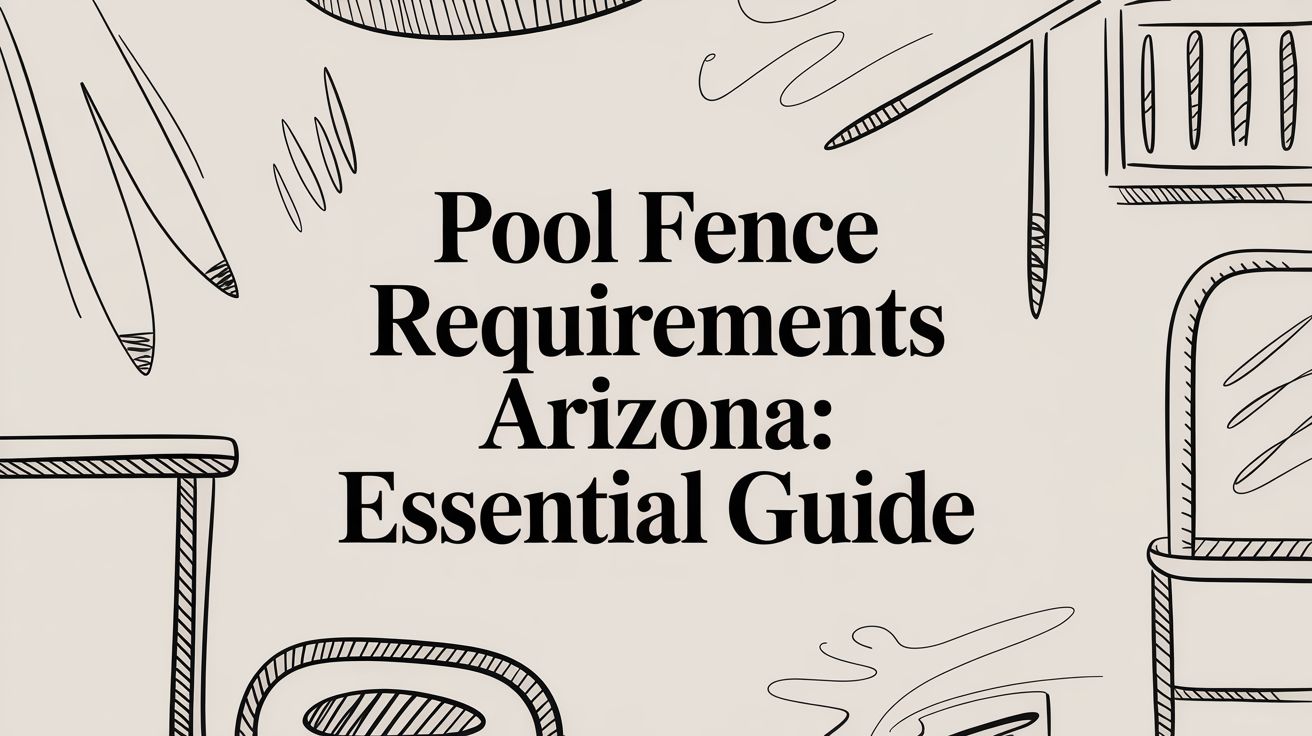
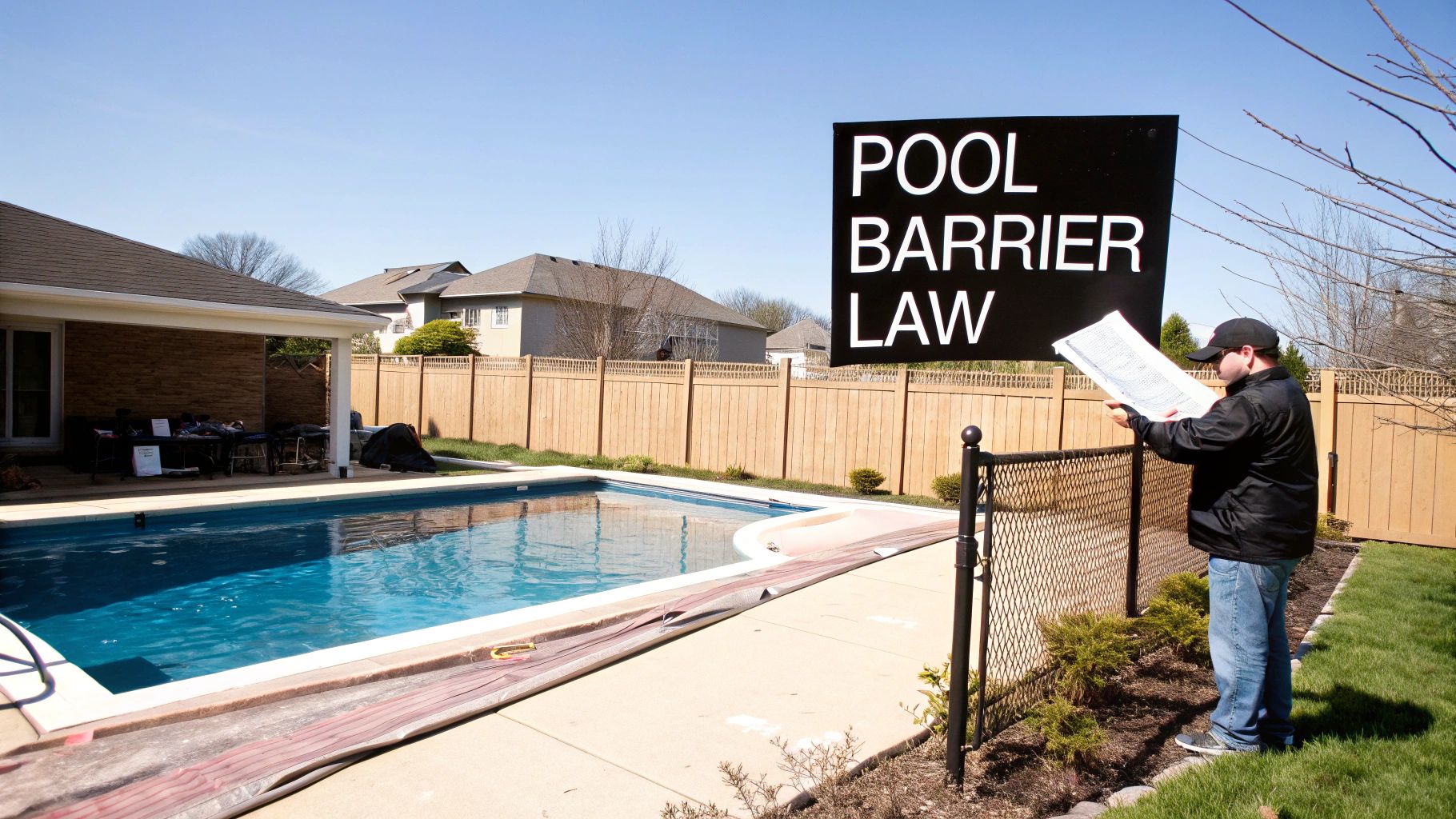
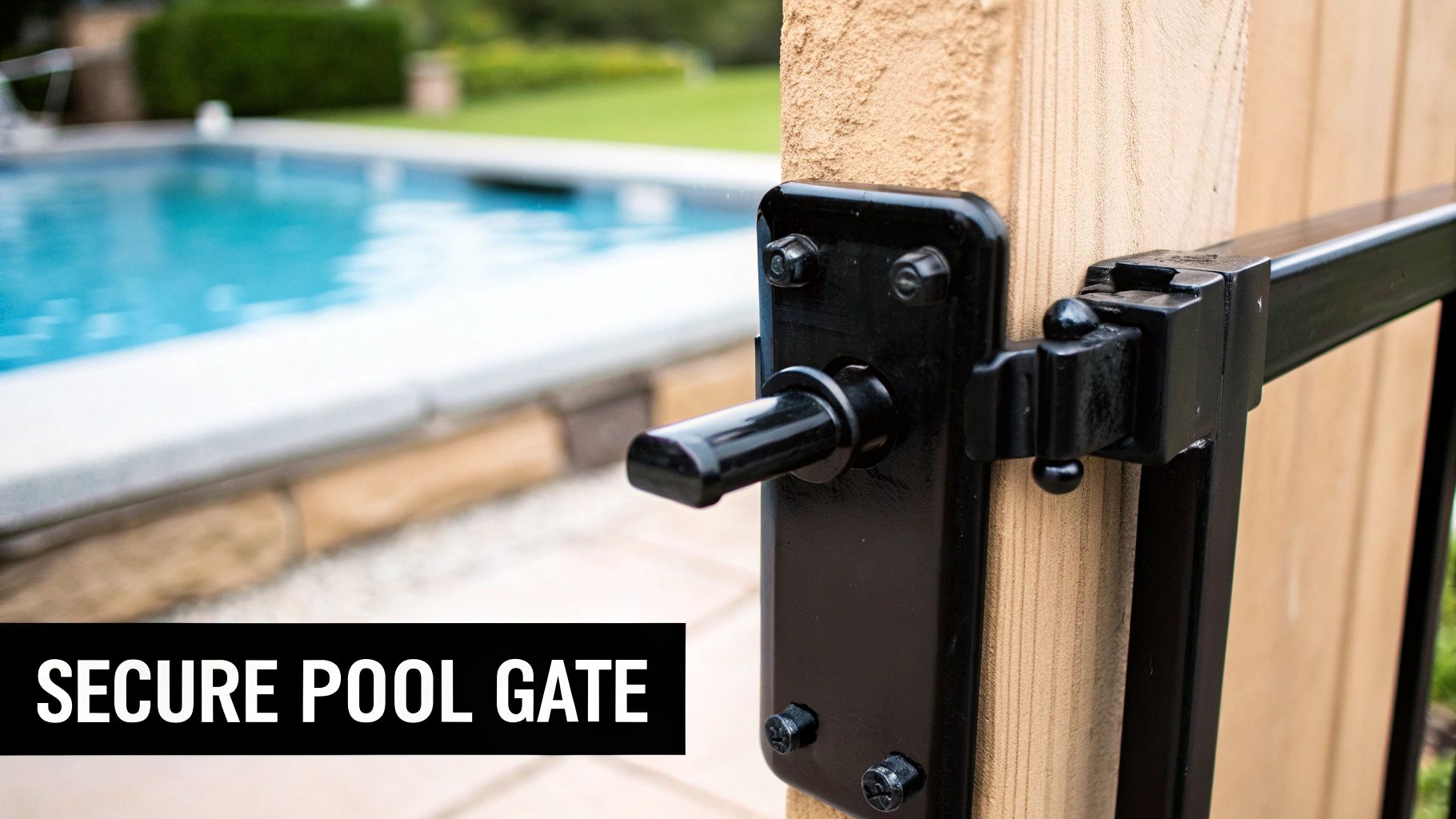
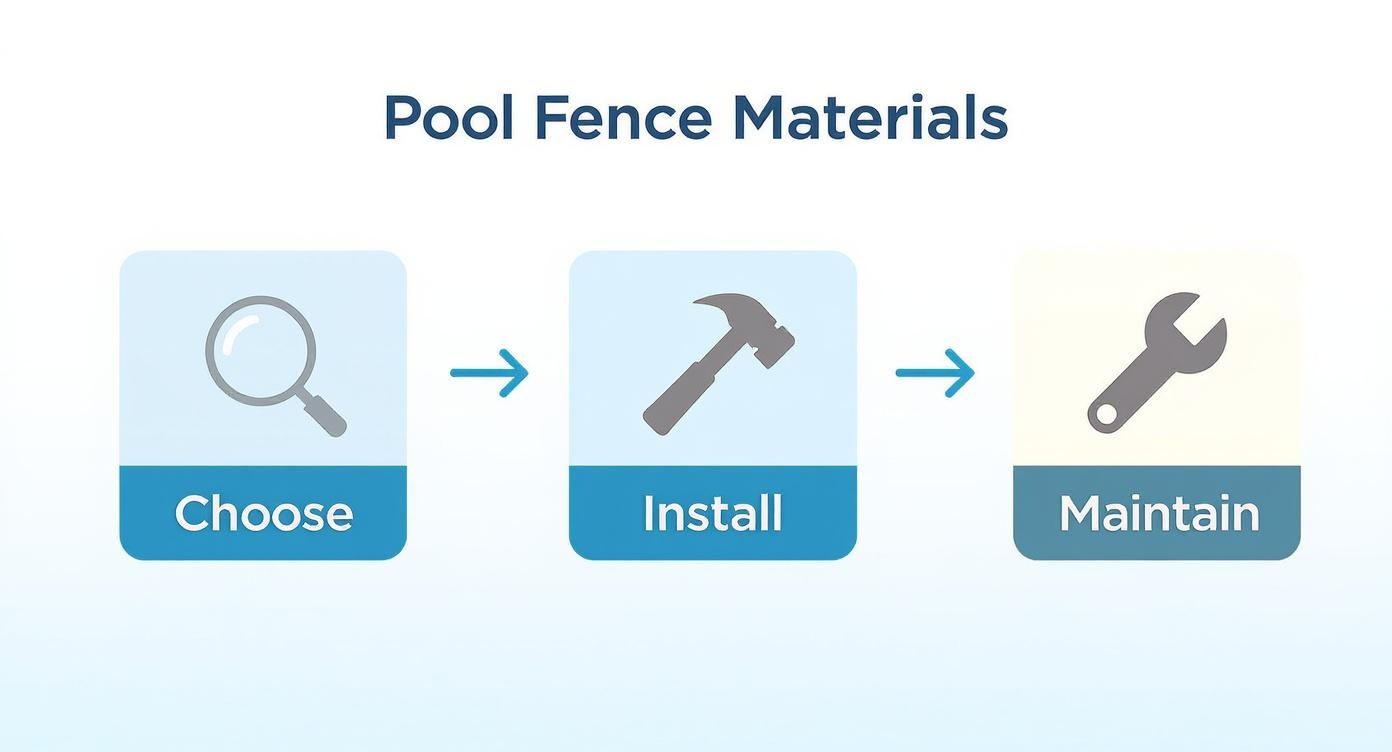

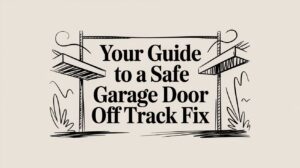


 (480) 548-0807
(480) 548-0807